25 Interesting Facts About Valencia You Never Knew
Looking for some fun facts about Valencia?
You’re in the right place!
Valencia might not be Spain’s most famous city, but with its golden beaches, ridiculously good food, and jaw-dropping architecture, it really should be.
It also happens to be the place I called ‘home’ for 18 months, so I’ve spent a fair bit of time wandering its colourful streets, learning the local quirks, and collecting fun facts like they’re going out of style.
So, without further ado, here are 25 of the most interesting facts about Valencia that I’ve learned.
Let’s get into it.
25 Fun Facts About Valencia You Never Knew
1. Valencia is the birthplace of paella
Everybody knows that paella comes from Spain, but did you know that Valencia is actually the birthplace of this iconic dish?
The small village of El Palmar is where you can find the original Paella Valenciana, made with chicken, rabbit, snails, green beans, and butter beans.
The best bit is the socarrat, the crispy, burnt rice on the bottom of the pan – yum!
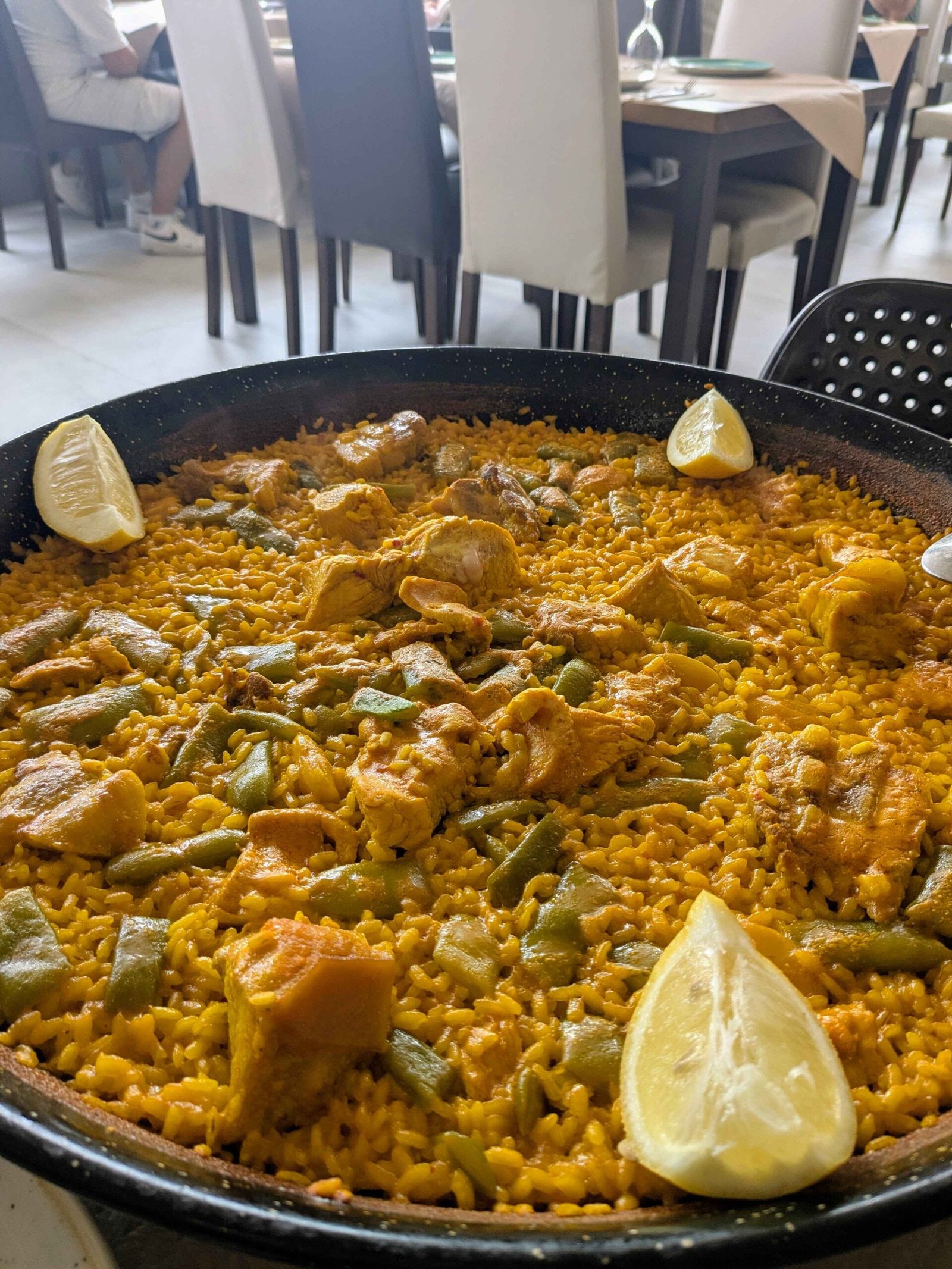
2. Valencia was founded by the Romans in 138 BC
Valencia was founded by the Romans, all the way back in 138 BC! It was established as a reward for around 2,000 veteran soldiers who had fought under Decimus Junius Brutus Callaicus during the Lusitanian wars.
3. Valencian oranges are world famous
Valencia is the orange capital of Spain, and produces 50% of Spain’s oranges!
Orange trees thrive here thanks to the Mediterranean climate and fertile soil, and Valencian oranges are famous for being incredibly sweet, juicy, and packed with flavour.
They’re exported all over Europe, and if you ask any Valenciano, they’ll tell you that Valencian oranges are the best in the world.
4. Valencia is home to Spain’s wildest festival
Las Fallas Festival is the biggest festival in Valencia and one of the craziest festivals in the country.
It has been named a UNESCO Intangible Cultural Heritage of Humanity, and it is completely FREE to attend!

Las Fallas is essentially a never-ending street party, and while the main event lasts for 5 days, in practice it goes on for the entire month of March.
All over the city, you will find children throwing firecrackers, people sitting out on the streets enjoying paella, and huge papier-mâché sculptures that get burned to the ground on the final day of the festival.
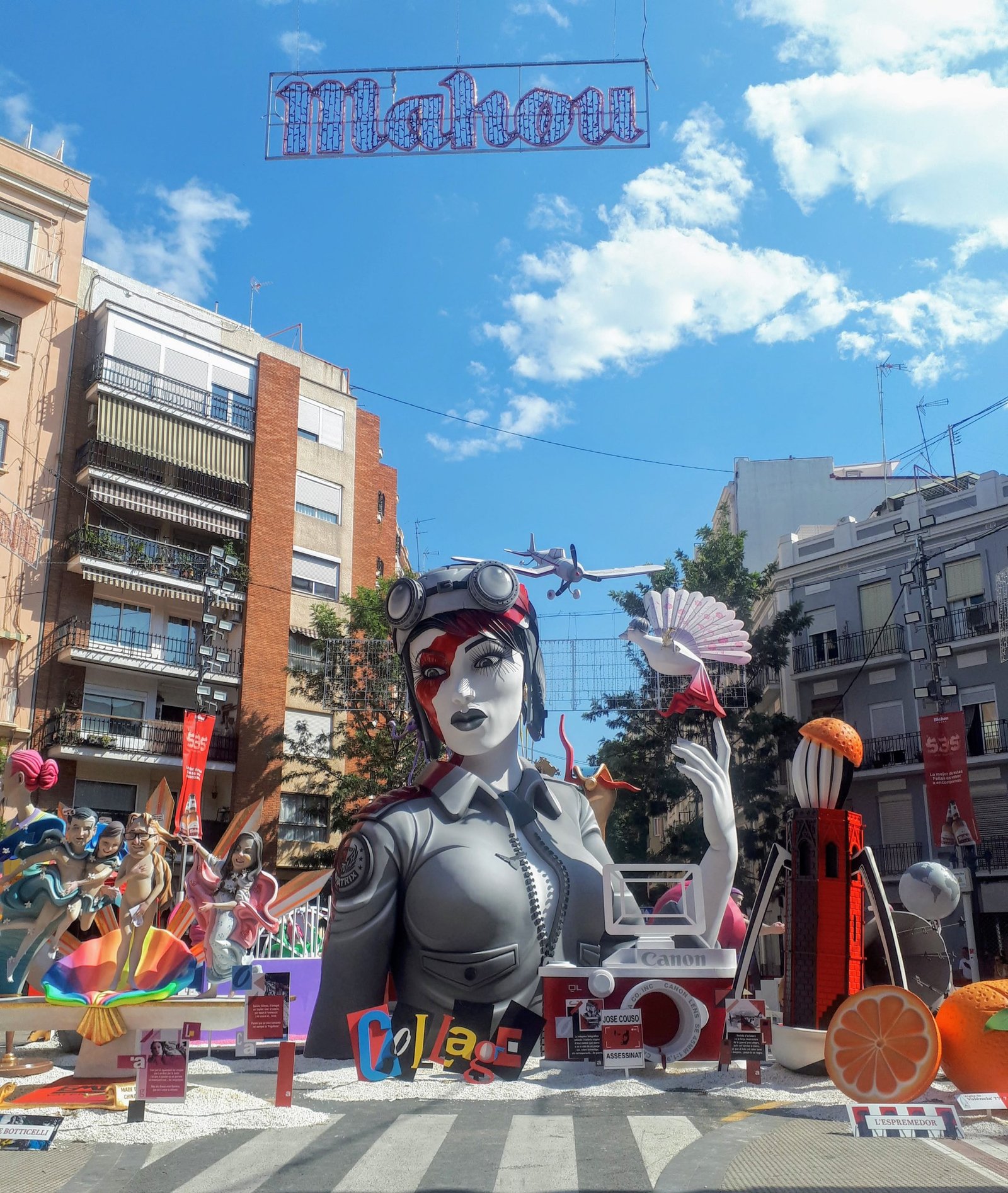
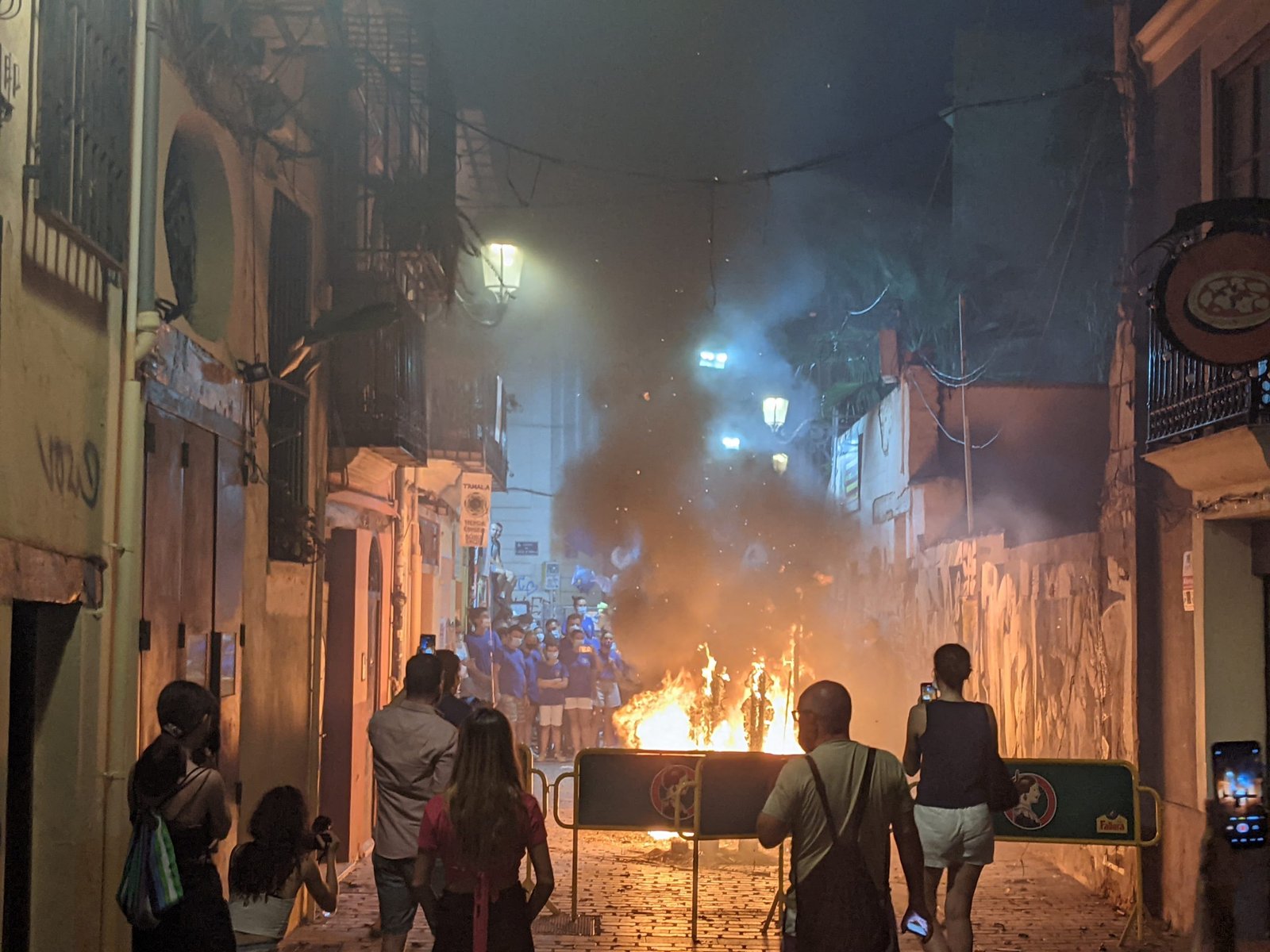
There are also daily mascletas (pyrotechnical displays of firecrackers and gunpowder that build in intensity), marching bands, 8:00am wake-up calls with firecrackers and trumpets, and a whole lot of alcohol.
If that sounds crazy, it’s because it is.
I go into the origins of Fallas in my guide to surviving Fallas festival, but it’s essentially a festival that welcomes the beginning of spring, and it has been going on since the Middle Ages!
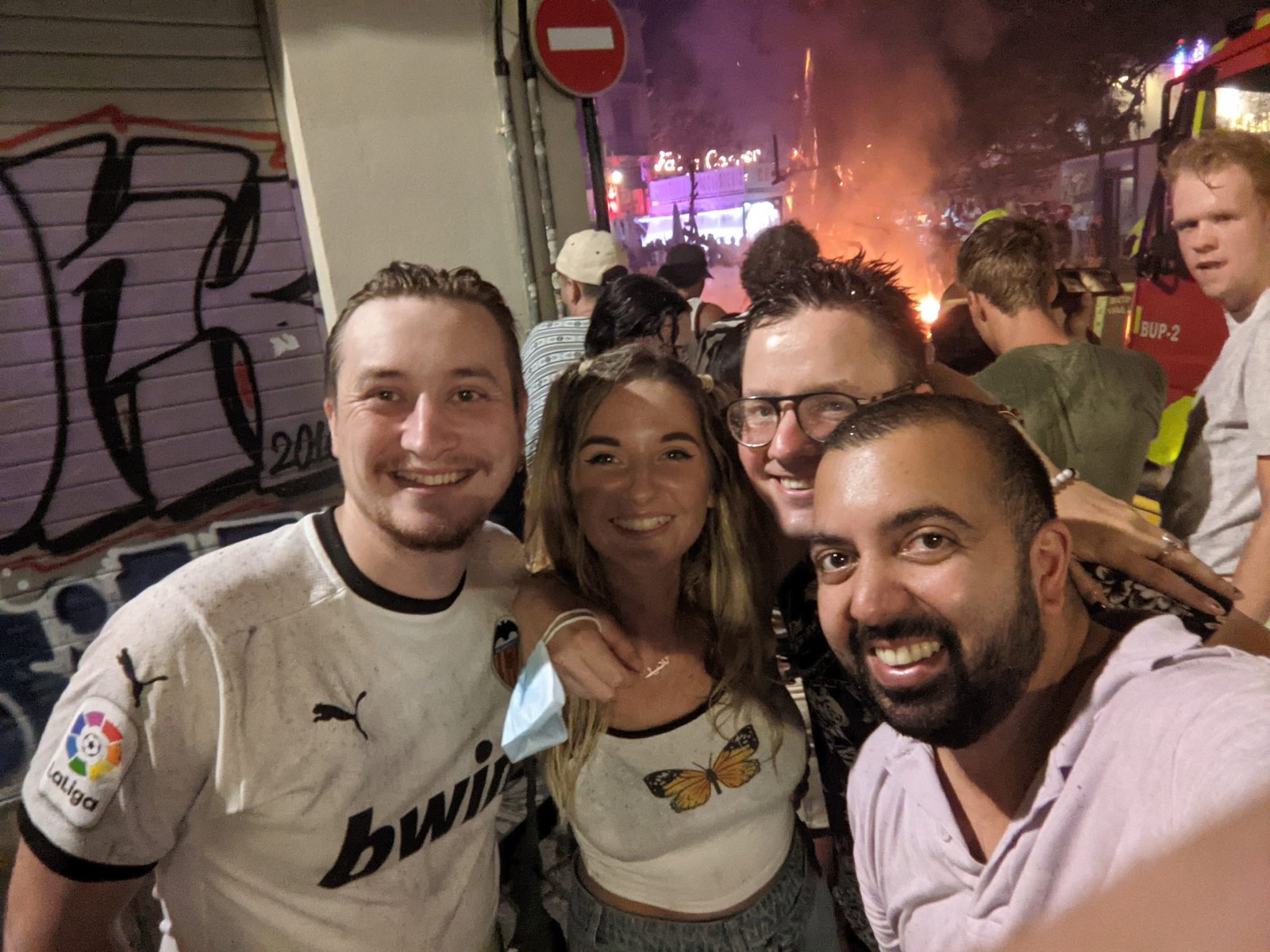
5. It has a futuristic complex known as the City of Arts and Sciences
The City of Arts and Sciences is one of Valencia’s most iconic landmarks.
It is a futuristic architectural wonder designed by Santiago Calatrava, a Valencian-born architect whose work can be found all over the world.
Originally budgeted at around 300 million EUR, the project famously ballooned to over a billion, sparking plenty of local controversy.
However, today it’s one of Valencia’s biggest draws.
Inside this insane complex, you’ll find Europe’s largest aquarium, a science museum, opera house, a planetarium, and more.
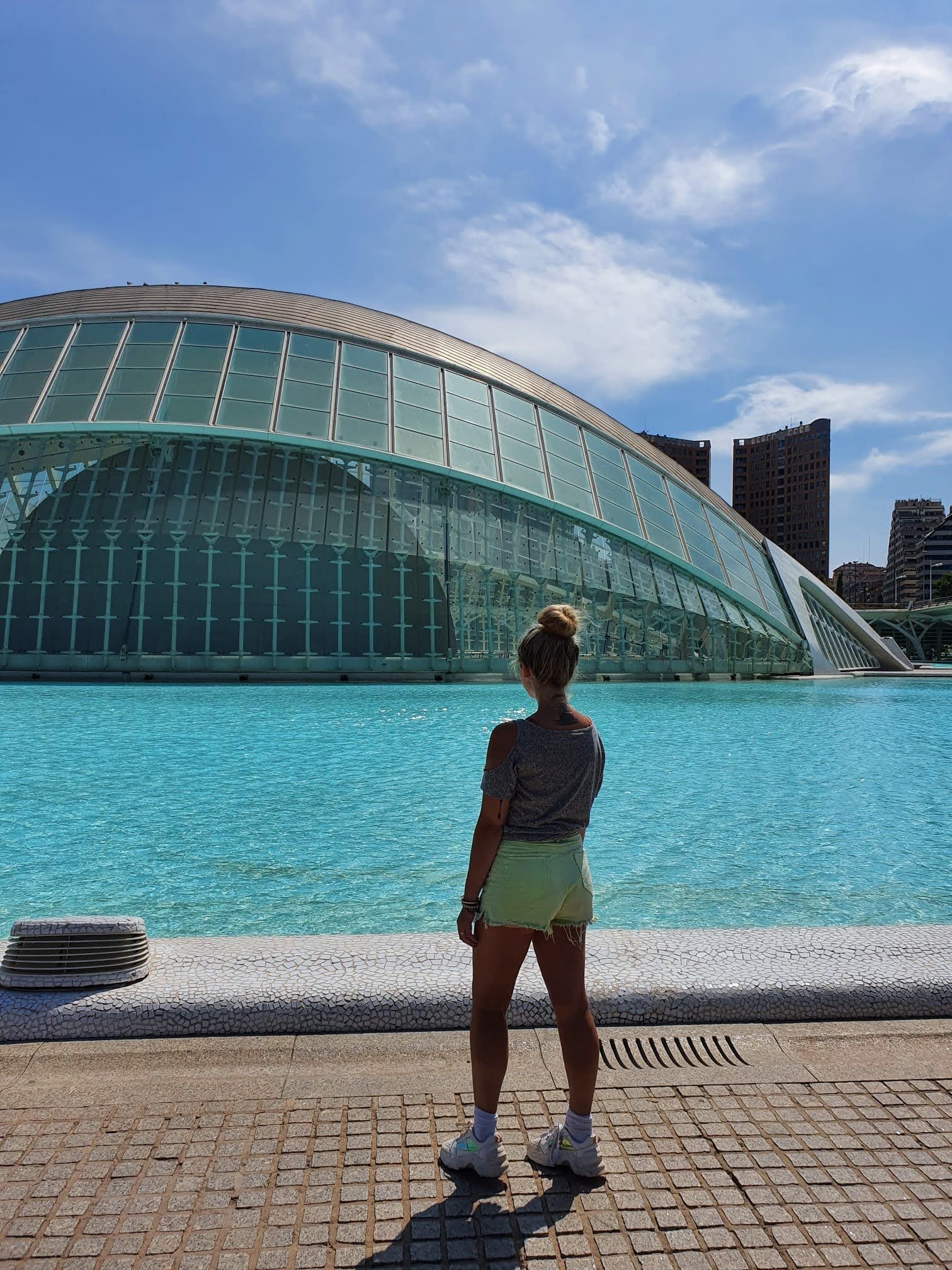
6. Valencia has its own language
Here’s something not everyone knows: Valencia has its own language!
While Castellano is spoken across Spain, in the province of Valencia you’ll also hear Valenciano, a regional language that’s closely related to Catalan.
My mum lives in a nearby pueblo called Oliva, and pretty much everyone there speaks Valenciano as their first language.
In the centre of Valencia, you may notice that street signs often have two variations of the same street name – that’s Castellano and Valenciano!
Valenciano is a huge part of the region’s identity and something that really sets Valencia apart from other parts of Spain.
However, in the city centre, most people speak ‘Spanish’ (Castellano), as the default, so you don’t need to worry about learning another language if you visit!
7. There’s a house for cats in Valencia
In the heart of the El Carmen neighbourhood (where I used to live!) is a very special little house – a house for cats!
The tiny Casa de los Gatos, complete with miniature windows and a tiled roof, is built into a wall, with a little cat-sized doorway that leads to a garden where stray cats can enjoy some respite from the busy city.
Legend has it that the woman who used to live in the house behind the wall created this entrance to her garden for Valencia’s feral cats, but it’s impossible to really know.
Either way, this is one of the most unique attractions in Valencia!
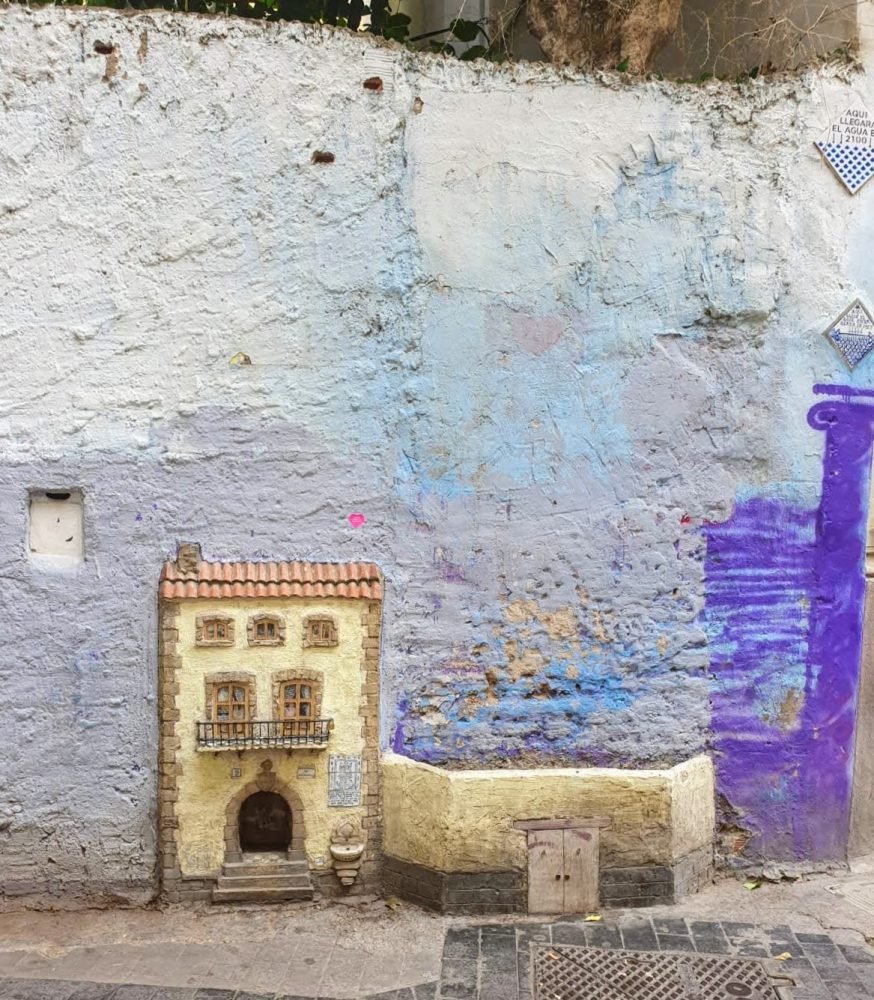
8. Valencia was briefly the capital of Spain!
During the Spanish Civil War, Madrid became too dangerous because of the advancing Nationalist forces, so the Republican government packed up and relocated to Valencia.
For almost a year, Valencia became the political heart of the country! Of course, it didn’t last, but it’s definitely one of the more unknown facts about Valencia.
9. The world’s largest food fight can be found in the Valencian province
If you thought Fallas festival sounded crazy, you are not prepared for this one.
Every August, the tiny town of Buñol hosts the world’s largest food fight, La Tomatina, where tens of thousands of people gather to throw overripe tomatoes at each other in the streets.
This one-hour event involves over 150,000 kilos of tomatoes, and it is one of the most famous festivals in Spain (for obvious reasons), drawing in visitors from all over the world.
10. The last Spanish Inquisition execution took place in Valencia
Did you know that the last ever execution carried out by the Spanish Inquisition happened in Valencia?
In 1826, a schoolteacher named Cayetano Ripoll was executed for not believing in God. Yep.
Even though the Inquisition had technically been disbanded by then, old habits die hard, and Ripoll was hanged in what is now the Plaça del Mercat, just outside the Central Market – think about that when you’re doing your grocery shopping!
11. Valencia gets over 300 days of sunshine a year
One of my favourite Valencia facts is that Valencia gets over 300 days of sunshine every year!
With endless blue skies and mild winters, it’s no wonder Valencianos are always outside sipping cold beer on terraces, strolling through the Turia gardens, or playing volleyball on the beach.
There really isn’t a bad time to visit Valencia.
12. You can find the Holy Grail in Valencia!
Did you know that you can find the Holy Grail in Valencia?
No, seriously.
Tucked away inside the Valencia’s cathedral is what many believe to be the actual cup Jesus used at the Last Supper.
While a few other contenders exist (because of course they do), this one has been backed by historians, archaeologists, and is even recognised by the Vatican as Christianity’s most sought-after relic.
Even if you’re not religious, you have to admit that that’s pretty cool, as is Valencia’s Cathedral in general.
13. Turia Park was once a river
It’s hard to believe that Valencia’s largest park, with its bike lanes, playgrounds, and palm-lined jogging paths, used to be a river.
The Turia River had an inconvenient habit of overflowing, and after a catastrophic flood in 1957, the authorities decided to reroute the Turia River completely (you can now find it on the outskirts of the city).
The dry riverbed was originally supposed to be turned into a motorway, but after fierce protests from locals, it became Turia Gardens instead.
Sidenote: Valencia’s beach is a bit of a mooch from the centre of the city, and if you want to enjoy the sun without leaving the centre, Turia Gardens is the best place to do so. I practically lived here when I was living in Valencia.
14. The oldest Day of the Three Kings celebration was in Valencia
The Day of the Three Kings (Día de los Reyes Magos) is a big deal in Spain.
Each year, on January 5th, colourful parades take over the streets, with the Three Wise Men throwing sweets to excited children. This is also the day when children receive their Christmas presents, so it’s more anticipated than Christmas itself!
What’s special about Valencia is that it’s home to Spain’s oldest recorded Three Kings Day parade, back in 1885.
15. Valencian water will get you drunk
If you see ‘Agua de Valencia‘ on the menu at one of Valencia’s bars, beware: this so-called ‘Water of Valencia’ is not water at all, but a very strong Valencian cocktail!
Agua de Valencia is said to have originated back in 1959 at Café Madrid in Valencia, by Constante Gil.
As the story goes, some Basque visitors kept ordering Cava, referring to it as ‘the water of Bilbao,’ but eventually, they asked Gil to make them something new.
He joked that he could make ‘the water of Valencia’ for them, and to his surprise, they took him up on the offer, meaning that he had to think quickly!
Knowing that his guests enjoyed drinking Cava, he decided to combine their favourite tipple with some freshly squeezed Valencian oranges, along with a splash of vodka and gin to top it off, and thus, Agua de Valencia was born.
Insider tip: you can get the best Agua de Valencia in Valencia from Café Madrid, Café de las Horas, and Café Lisboa.
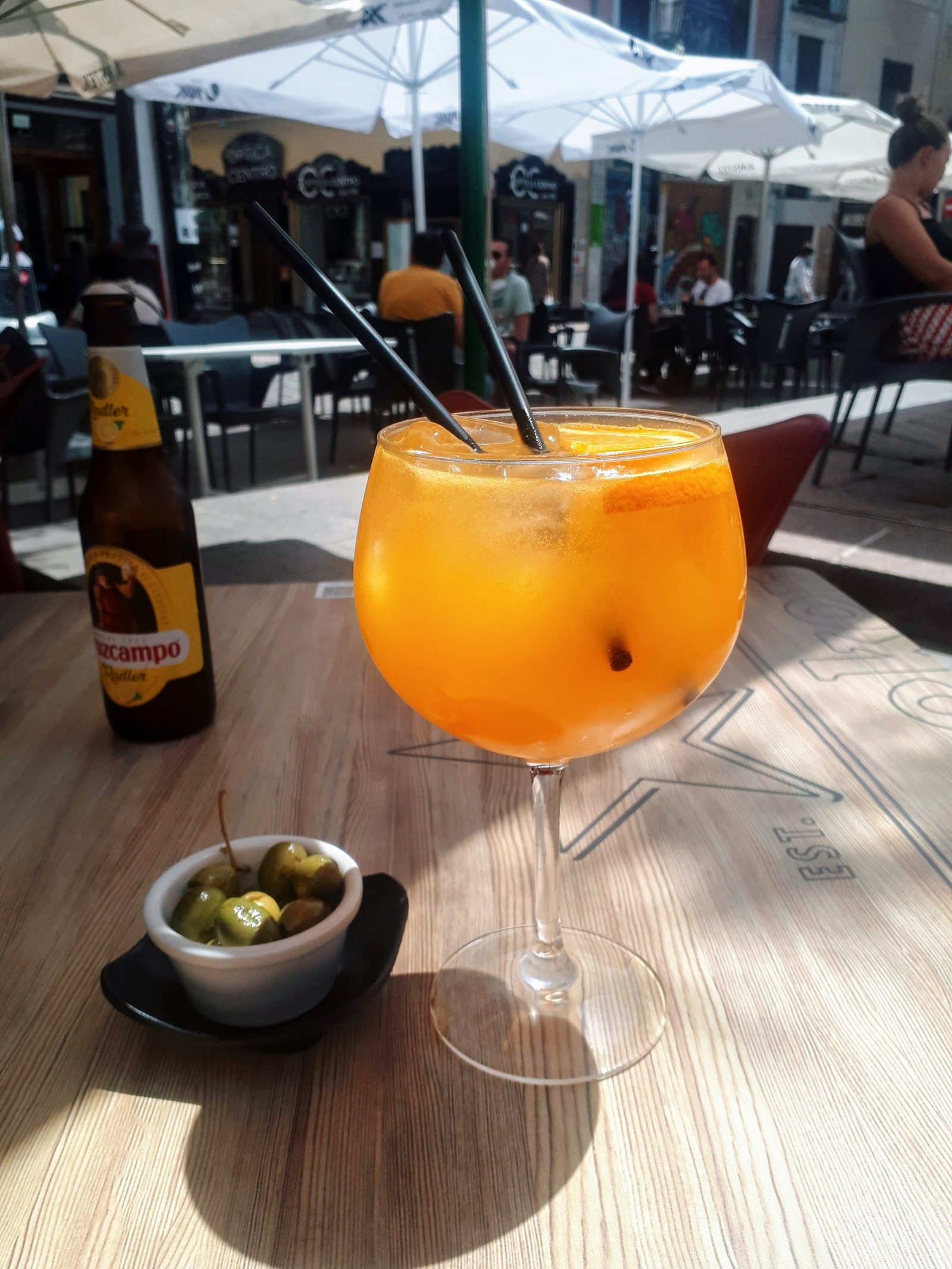
16. The world’s oldest court is in Valencia
Valencia’s Tribunal de las Aguas (Water Tribunal) is the oldest functioning judicial body in the world, dating all the way back to at least the year 960 (some say even earlier!). It’s also the oldest surviving democratic institution in Europe!
You can go and watch the rulings yourself, every Thursday at midday, on Plaza de la Virgen.
Every week, eight farmers dressed in black sit in a circle and settle irrigation disputes out loud, in public, with no written records. It’s one of those quirky Valencian traditions that you just couldn’t make up.
17. You can find the world’s second-narrowest building in Valencia
If you didn’t know La Estrecha was there, you’d almost certainly walk right past it.
Measuring just 107cm wide at its narrowest point, it’s officially the second-narrowest building in the world (the narrowest is in Brazil), and it’s right in the middle of Valencia’s Old Town!
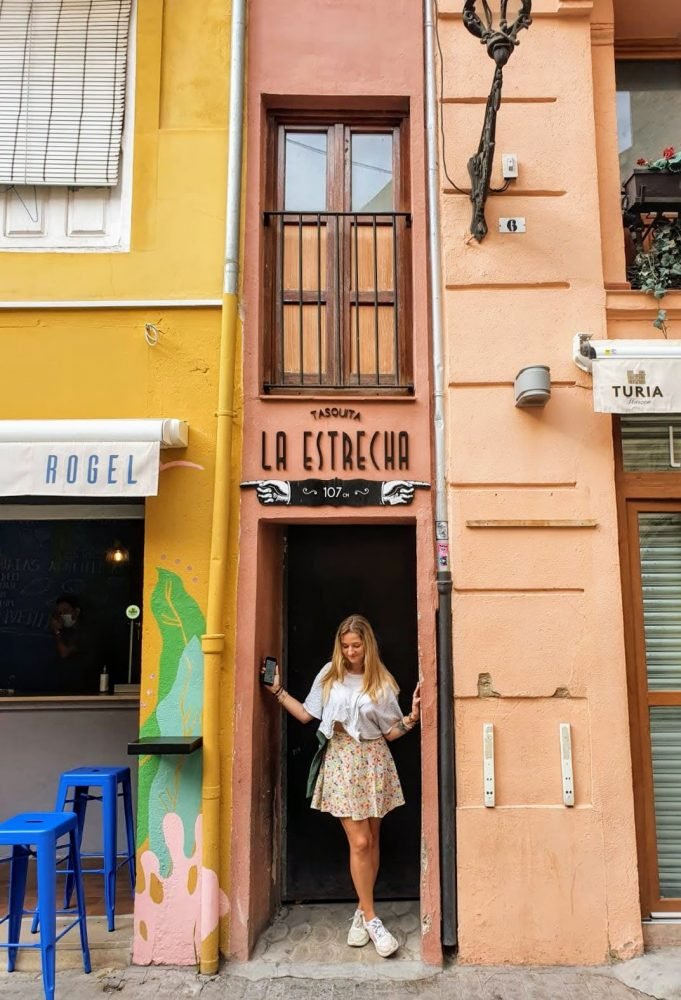
Remarkably, this place was once a fully functioning home, though it’s now part of a neighbouring tapas bar.
The reason why this building is so narrow is that property taxes used to be based on the width of a building’s façade. The narrower the building, the less you had to pay in taxes!
18. Valencia was named the European Green Capital of 2024
Valencia was named the European Green Capital of 2024, thanks to its sustainable tourism initiatives, climate neutrality, and green transition.
There are so many green spaces in Valencia, and it’s also super common to use electric bikes and scooters to get around rather than driving. In fact, there are more than 200km of cycle lanes in Valencia, making this one of the most bike-friendly cities in Europe!
19. Spain’s largest lake is just outside the city
Albufera Natural Park, 10 km south of Valencia, is one of the most valuable coastal wetlands in the Mediterranean basin and home to the largest lake on the Iberian peninsula!
With more than 223 square kilometres of rice fields and over 350 species of birds that seek refuge here throughout the year, Albufera Natural Park is a really special place.
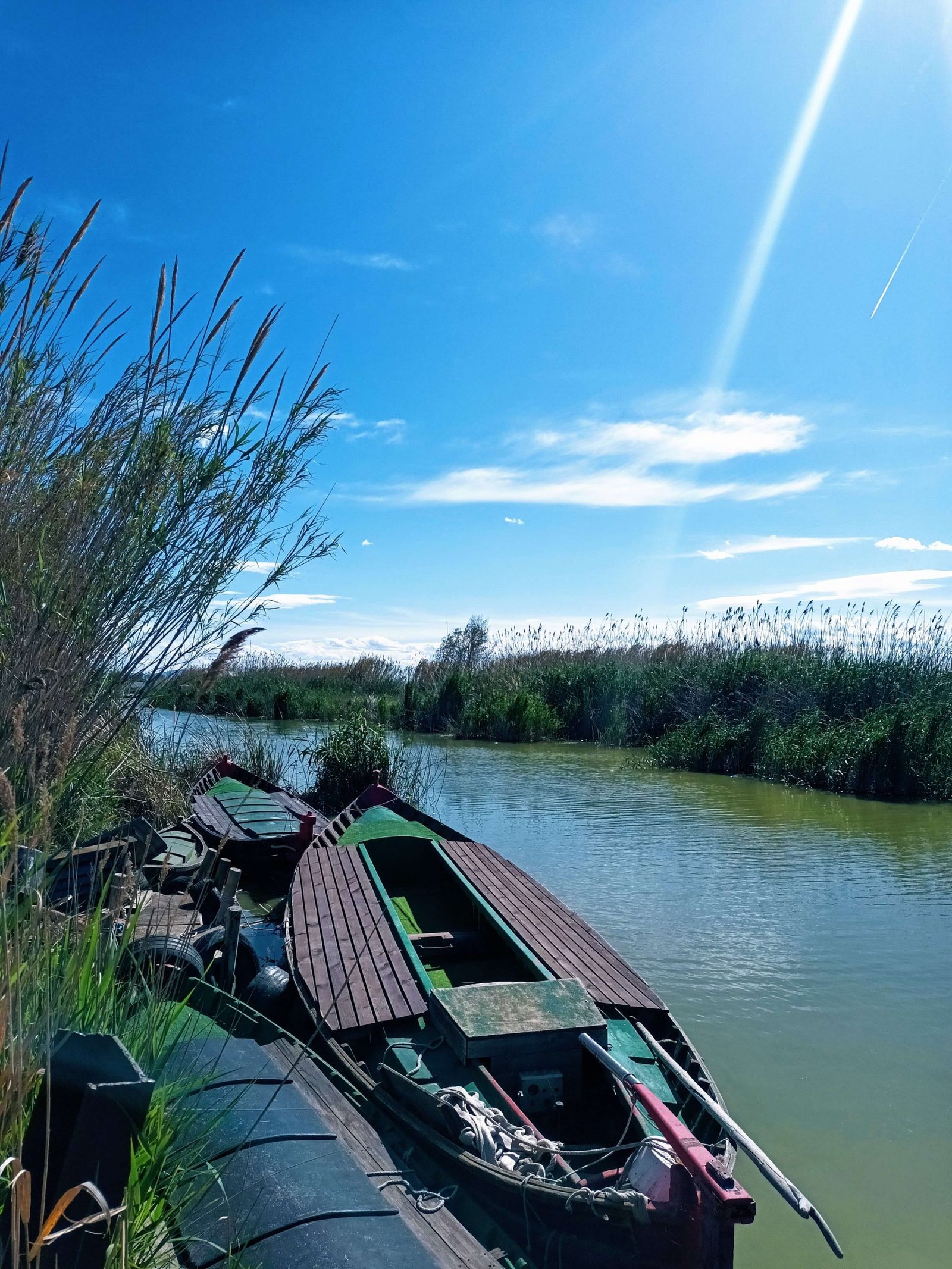
20. Valencia is home to the largest aquarium in Europe
L’Oceanogràfic, which you can find in the City of Arts and Sciences complex, is not only the largest aquarium in Europe – it’s actually one of the largest in the world!
Almost 2 million people visit L’Oceanogràfic every year to see some of the 45,000 animals (from 500 different species!) that call this place ‘home’.
There’s even an aquarium restaurant here, if you’re looking for an extra special dining experience in Valencia!
21. Valencia is home to Europe’s largest food market
Not only is the Mercat Central de Valencia beautiful, but it’s also the largest fresh produce market in Europe, spanning over 8000 square metres and housing more than 250 stalls.
Even if you’re not in the market (!) for grocery shopping, you should still make a point of stopping by to admire the beautiful stained glass windows, or grabbing a bite to eat at Central Bar, an affordable tapas bar by Valencian chef Richard Camarena (who has multiple Michelin Stars to his name).
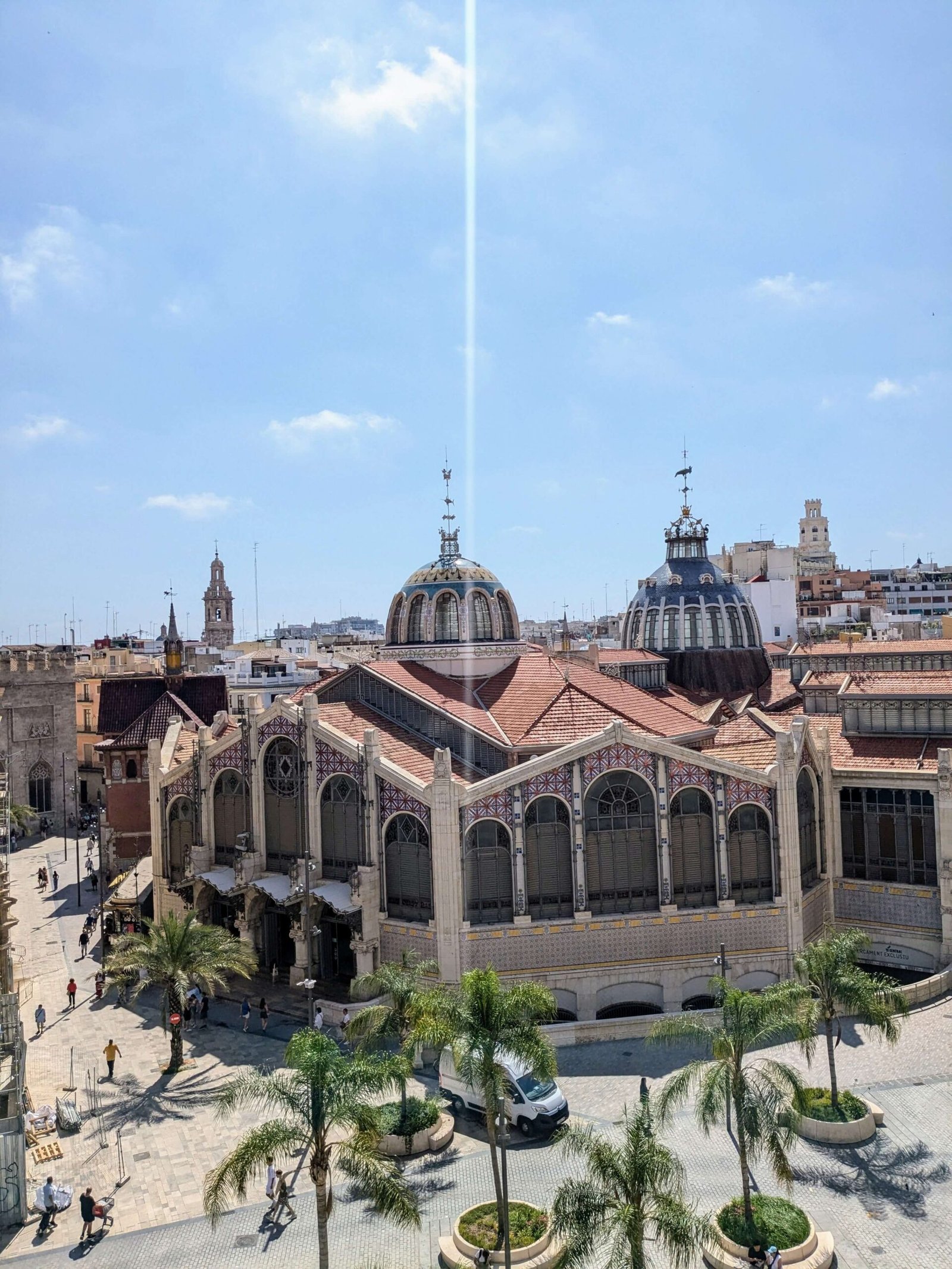
22. Valencia has its own traditional dress
Valencia has its own traditional dress, which you’ll see everywhere during Las Fallas, when the streets are filled with falleras wearing elaborate silk gowns, lace shawls, and impossibly intricate hairstyles held in place with decorative pins.
These dresses can cost thousands of euros, and are often passed down through generations.

The men have their own traditional costumes too, with embroidered waistcoats, sashes, and breeches. During festival season, entire neighbourhoods get dressed up, and the city looks like something out of a historical painting.
It’s one of the most unique and beautiful things about Valencian culture.
23. Valencians are brave
Did you know that the word ‘Valencia’ actually means ‘valour’ or ‘strength’ in Latin!
The city got its name in 138 BC after the Romans recognised the bravery of the soldiers and called it Valēntia.
24. Valencia was the World Design Capital in 2022
In 2022, Valencia was crowned World Design Capital, a title that it certainly deserves.
From the futuristic vibes of the City of Arts and Sciences to centuries-old ceramics still being handmade today, design is woven into every corner of Valencia’s identity.
From urban planning to sustainability initiatives, design plays a crucial role in improving the lives of Valencians, and it does so in style.
25. The world’s first ever psychiatric hospital was founded in Valencia
The world’s first ever psychiatric hospital was founded in Valencia, all the way back in 1409!
Long before mental health was widely understood (or even talked about) the Hospital de los Locos (literally, ‘Hospital of the Crazy Ones’) was established with the goal of treating people with dignity and compassion.
The hospital was the brainchild of Father Joan Gilabert Jofré, who was moved to act after witnessing the violent mistreatment of a man with mental illness in the streets. His efforts laid the foundation for an institution that would go on to inspire others across Europe. Not exactly one of the most fun facts about Valencia, but an interesting one nevertheless.
Fun Facts About Valencia | Final Thoughts
So, that brings us to the end of my mega list of interesting facts about Valencia!
Despite living in Valencia for over 18 months (and returning countless times since), I’m forever learning new things about this fascinating city.
If I missed anything, do let me know in the comments section below, otherwise, I hope you learnt something new from this article!
Until next time,
XOXO
If you liked this article and would like to support my work, please click the button above to donate a couple of bucks and buy me a coffee. The ad revenue that I receive on this website is minimal, so support from my readers enables me to keep creating content that you (hopefully!) love to read.
Disclaimer: Travelling Jezebel contains affiliate links. If you make a purchase on a recommended site, I may make a small commission at no extra cost to you.

Thank you for this amazingly informative article, like you I never tire of learning about this beautiful city. And the oranges are extremely tasty 🙂